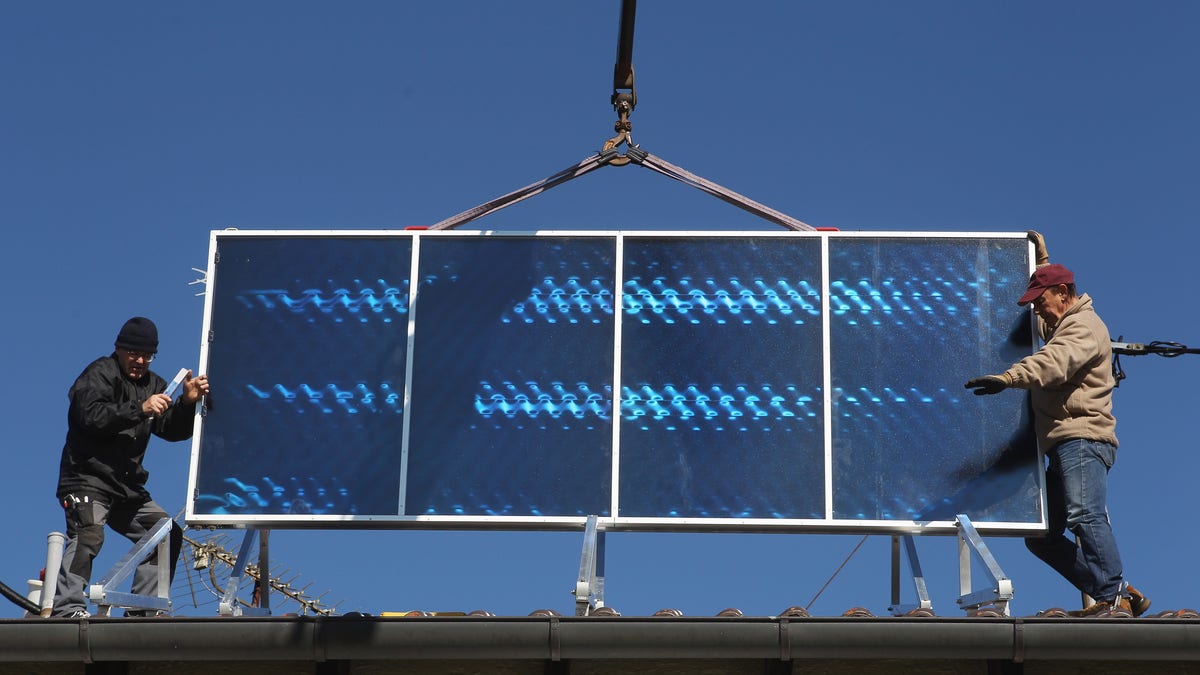
STARNBERG, GERMANY - OCTOBER 15: Workers install solar power modules for producing heat on the roof of a house on October 15, 2011 in Wessling, Germany. Germany has and is continuing to invest heavily in solar energy, both in the public and private sectors. The German government introduced a feed-in tariff with its Renewable Energy Act in 2000 that guarantees homeowners a minimum rate for selling electricity from renewable energy sources into the nation's electricity grid. (Photo by Alexandra Beier/Getty Images) (2011 Getty Images)
Twenty-five thousand dollars: that was the difference between the median household income for Latinos ($40,979) and the rest of the nation ($65,225) in 2013. The largest racial minority in the country – Latinos – are also disproportionately represented among those at lower income levels (one in four lives below the poverty level, compared with one in six in the overall population). Put these elements together and it becomes clear that income inequality is not just some fringe issue affecting only a small portion of the population. This economic inequality is taking a toll on American Hispanic families, and we need to take all necessary steps to alleviate it.
We shouldn’t place more burdens on our poor households, which are already struggling to pay for their energy. There are better ways to accomplish our nation’s energy goals – ones that will do no harm.
There is a confluence of factors compounding the problem, including some policies supporting the growth of solar energy. Clean energy is needed in this country and it is without a doubt a positive thing. While the policies meant to support the growth of renewable energy sources like rooftop solar should never harm the poorest among us, unfortunately some of those policies are amplifying our nation’s inequality problem.
For example, net metering, which requires utilities to purchase extra energy that rooftop solar customers generate, is unintentionally subsidizing more wealthy homeowners at the expense of lower-income families who cannot afford to purchase a rooftop solar system. This happens because rooftop solar customers are compensated by their utility at an above-market rate for the extra power they produce. The costs that these customers avoid are then imposed on others (people without rooftop solar). Essentially, net metering has become a subsidy for the wealthy.
What does this look like in real terms? Over $20,000 worth of subsidies are paid to an average rooftop solar customer in California, according to a recent report by The Edison Foundation’s Institute for Electric Innovation. And when combined with federal tax credits, the subsidy balloons to over $24,000. This is far more than is necessary to incentivize the solar market.
Many of the families that end up carrying the economic burden that comes with those subsidies can barely pay for the basics such as housing, utilities, and food. This is unfair. We shouldn’t be exacerbating income inequality because we want to grow the market for rooftop solar.
What makes it worse is that the avoided costs are actually a result of something rooftop solar customers use, but are obviously not paying enough for – the electric grid. Everyone uses the electric grid. It’s how we all get our electricity. And rooftop solar owners use the grid to get paid for the power they generate, not to mention all of those times when the sun isn’t shining. It’s only logical that the costs of the grid should be paid for by the people who use it, which is everyone.
I know there are better ways to encourage the use of rooftop solar than relying on old policies that hurt the less well-off. This is about fairness, and we must not lose sight of vulnerable American families in the noble pursuit of growing clean energy in America. We shouldn’t place more burdens on our poor households, which are already struggling to pay for their energy. There are better ways to accomplish our nation’s energy goals – ones that will do no harm.
